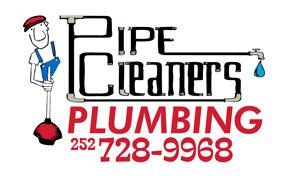Preventing Common Issues: Best Practices in Drain Maintenance and Repair
Maintaining a well-functioning drainage system is essential for the health and safety of any property. This blog provides insights into the best drain maintenance and repair practices, highlighting how to avoid common drainage problems.
Understanding Your Drainage System
Before you can effectively maintain and repair drains, it's important to understand the different types of drainage systems and their components. Differentiating between surface and waste drains and knowing their common issues sets the stage for proper care and maintenance.
1. Regular Inspection and Cleaning
- Scheduled Inspections : Regular inspections are key to the early identification of potential drain issues. This includes checking for signs of blockages, leaks, or wear and tear, especially after extreme weather conditions or heavy usage.
- Routine Cleaning : Proactive cleaning is one of the most effective ways to prevent drain blockages and maintain flow efficiency. Strategies include removing debris from surface drains and avoiding disposing of problematic waste into sewage drains.
2. Identifying Common Problems
- Recognizing Blockages : Understanding the common causes of blockages, such as accumulated debris or foreign objects, and recognizing early signs is crucial for timely intervention.
- Detecting Pipe Damage : Identifying signs of pipe damage like leaks, corrosion, or unusual noises can prevent more severe issues. Early detection is key to minimizing repair costs and maintaining system integrity.
3. Preventive Measures
- Installation of Drain Guards : Drain guards are a simple yet effective tool for preventing debris from clogging your drains. Their use in kitchens and bathrooms can significantly reduce maintenance needs.
- Scheduled Professional Cleanings : Routine professional cleanings can be a wise investment, especially for systems under heavy use or those with a history of problems. This practice ensures a deeper clean and can prevent long-term issues.
4. Emergency Preparedness
- System Knowledge : Being familiar with the layout of your drainage system, including the main shut-off valve, is crucial for effectively managing emergencies and minimizing damage.
- Emergency Toolkit : Maintaining basic tools for drainage emergencies, such as a plunger and waterproof gloves, can help you quickly and efficiently address minor issues.
5. Environmental Considerations
- Eco-friendly Maintenance Practices : Adopting environmentally friendly cleaning and maintenance practices protects your pipes and reduces environmental impact. This includes using natural cleaning agents and being mindful of what goes down the drain.
- Rainwater Harvesting Integration : Incorporating rainwater harvesting can alleviate pressure on drainage systems and provide an eco-friendly alternative water source for non-potable uses.
6. Advanced Technologies in Drain Maintenance
- Utilizing Inspection Cameras : Modern technologies like inspection cameras can provide an inside view of the drainage system, helping to identify and locate problems accurately without invasive methods.
- Trenchless Repair Techniques : Exploring trenchless repair techniques can be a less invasive and more cost-effective solution for repairing damaged pipes, especially in hard-to-reach areas or busy urban settings.
Effective drain maintenance and repair are about more than just fixing problems as they arise; it’s about adopting a proactive approach to prevent issues from occurring in the first place. You can ensure a healthy, efficient drainage system by understanding your drainage system, performing regular maintenance, adopting preventive measures, and being prepared for emergencies. Remember, proactive care is the key to long-term drain health.



